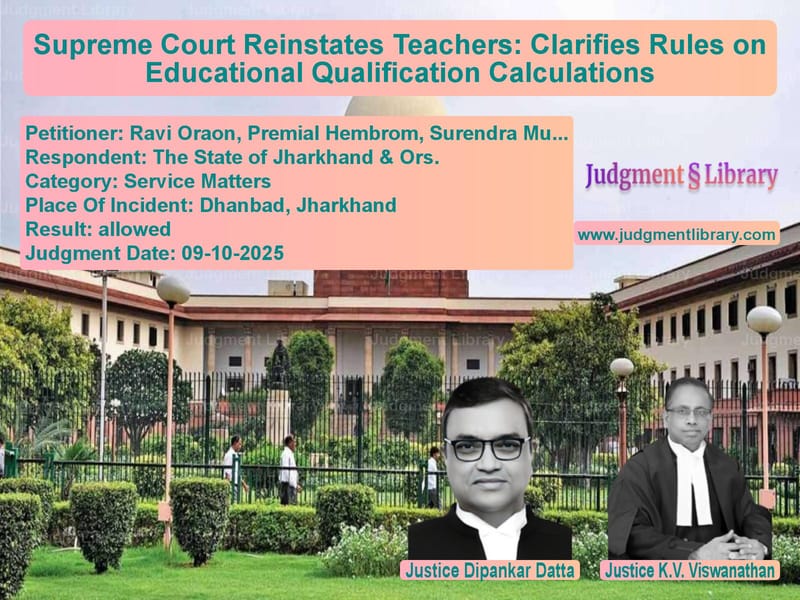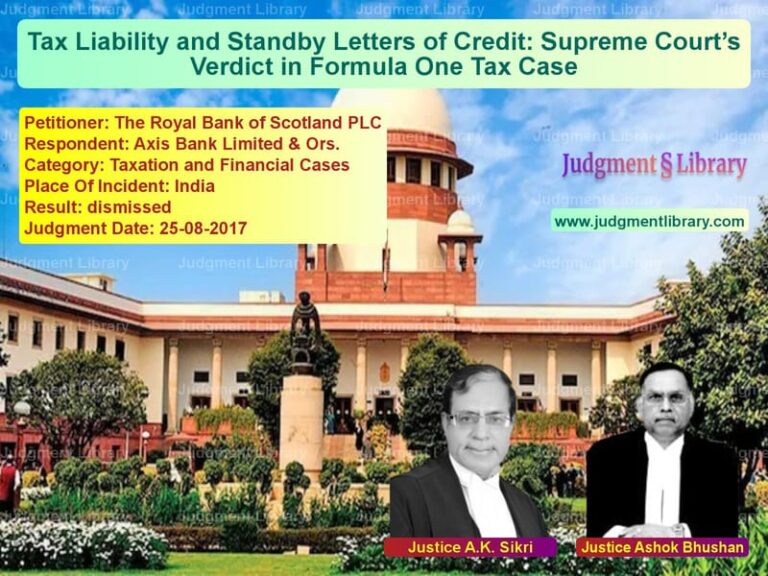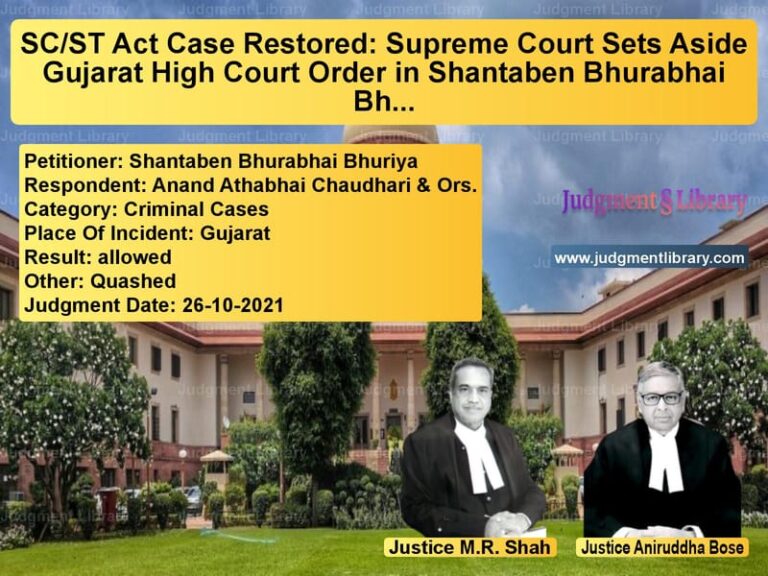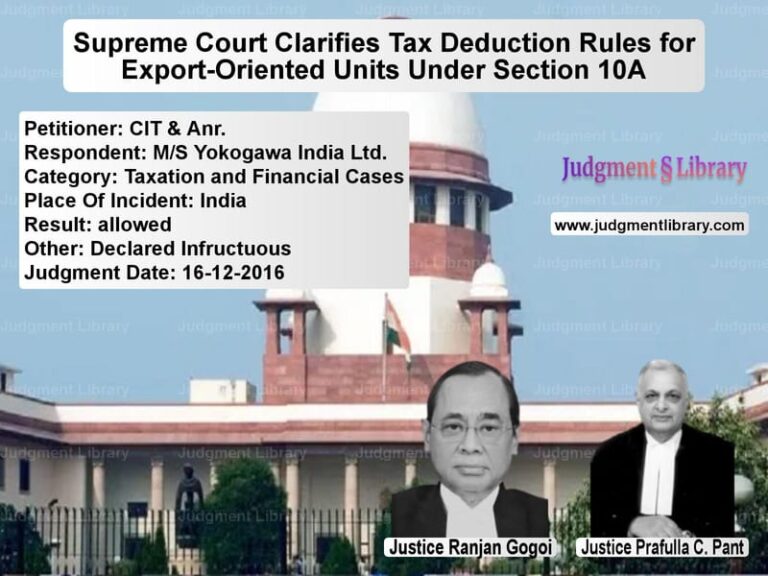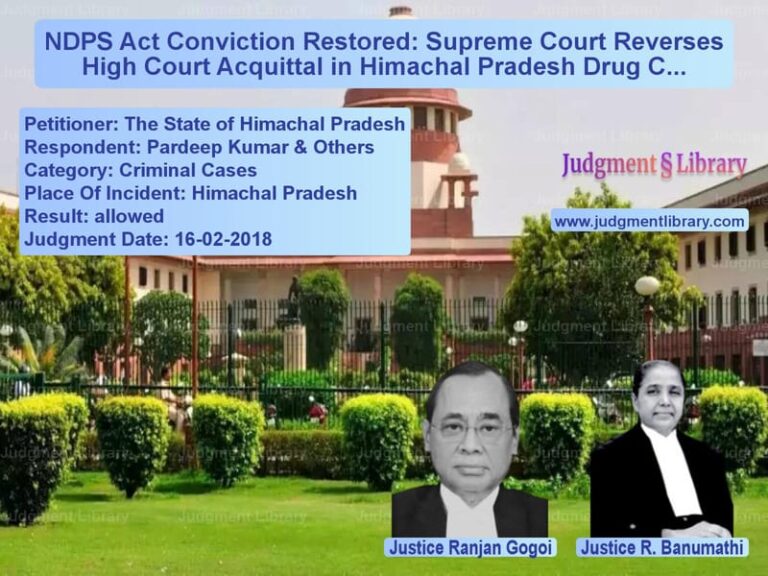Supreme Court Reinstates Teachers: Clarifies Rules on Educational Qualification Calculations
In a significant judgment that brings relief to three teachers who fought a decade-long legal battle, the Supreme Court has reinstated two teachers and granted compensation to the family of a third who passed away during the pendency of litigation. The case involved Ravi Oraon, Premial Hembrom, and Surendra Munda – three Scheduled Tribe candidates who were appointed as Intermediate Trained Teachers in Jharkhand in 2015, only to be terminated a year later in what the Supreme Court termed as a “highhanded, arbitrary and illegal” manner.
The judgment delivered by Justices Dipankar Datta and K.V. Viswanathan on October 9, 2025, not only provides justice to the aggrieved teachers but also clarifies important legal principles regarding the calculation of educational qualifications and the application of natural justice in service matters. The Court’s detailed analysis of the Jharkhand Primary School Teacher Appointment Rules, 2012, and its strong emphasis on procedural fairness serve as an important precedent for similar cases across the country.
The Case That Spanned a Decade
The legal saga began in 2015 when the District Education Superintendent, Dhanbad, advertised certain posts of Intermediate Trained Teacher (Classes I to V). The appellants – Ravi Oraon, Premial Hembrom, and Surendra Munda – all belonging to Scheduled Tribe category, applied for these posts and successfully cleared the recruitment process. They joined their duties in December 2015 and began their teaching careers.
Read also: https://judgmentlibrary.com/supreme-court-resolves-telangana-judicial-service-recruitment-dispute/
However, their professional stability was short-lived. On September 27, 2016, show cause notices were issued to them alleging that they did not fulfil the eligibility criterion of having secured a minimum of 45% marks in their intermediate examination (Class XII). Questions were also raised about the validity of their graduation certificates.
The appellants promptly replied to these notices in October 2016, pointing out two crucial facts. First, as members of the Scheduled Tribe category, they were entitled to a 5% relaxation and only needed 40% marks, not 45%. Second, they had indeed secured more than 40% marks when calculated according to the method prescribed on their mark sheets, which included bonus marks from vocational subjects. Specifically, Ravi had secured 42.55%, Premial 40.22%, and Surendra 41.33% marks.
Despite their detailed explanations, on October 7, 2016, their services were terminated. The Department, using a different calculation method that excluded marks from vocational subjects, computed their scores as 38.56%, 39.78%, and 39% respectively – all below the required 40%.
The Legal Journey Through Courts
The terminated teachers challenged their termination before the Jharkhand High Court through separate writ petitions. A Single Judge of the High Court allowed these petitions in 2018 and 2022, setting aside the termination orders. The Single Judge held that the Department had erroneously relied on Rule 21 of the 2012 Rules, which dealt with preparation of merit lists, rather than Rule 4, which governed eligibility criteria.
However, the State authorities filed intra-court appeals before a Division Bench of the High Court, which reversed the Single Judge’s decisions. The Division Bench held that Rule 21 of the 2012 Rules prohibited the inclusion of marks from vocational subjects, and therefore the appellants were rightly terminated for not meeting the minimum qualification criteria.
Meanwhile, significant developments occurred during the litigation. The controversy regarding the validity of graduation certificates from Hindi Vidyapeeth, Deoghar, was settled in favor of the appellants through a separate High Court judgment. Consequently, Ravi and Premial were freshly appointed as teachers on January 17, 2025, but they lost the benefit of their past service. Tragically, Surendra Munda passed away on August 5, 2024, before he could benefit from this development.
The Supreme Court’s Detailed Analysis
The Supreme Court began its analysis by examining the crucial issue of how to calculate the percentage of marks for determining eligibility. The appellants argued that according to the guidelines printed on the reverse of their mark sheets, bonus marks secured in vocational subjects (over and above the minimum pass marks) were to be added to the aggregate of compulsory and optional subjects. Using this method, all three had secured more than 40% marks.
The Court specifically examined the case of Premial Hembrom to illustrate this point. In his main five subjects, Premial had secured 358 out of 900 marks (approximately 39.77%). However, in his vocational subject, he secured 39 out of 100 marks, with the minimum qualifying marks being 35. The additional 4 marks, when added to his aggregate, increased his score to 362 out of 900 (approximately 40.22%).
The Court observed: “Marks secured in the vocational subject is a way for a candidate to improve his/her overall percentage of marks. The reasoning behind this method, is clear to us. A vocational subject, though optional, would place an additional burden on an examinee which he/she shoulders in the fervent hope of improving his/her overall percentage.”
The Critical Distinction Between Rule 4 and Rule 21
The Supreme Court made a crucial distinction between Rule 4 and Rule 21 of the 2012 Rules, which the High Court had failed to appreciate. Rule 4, falling under Chapter 2 titled “Teacher Eligibility Test,” deals with eligibility criteria for appearing in the Teacher Eligibility Test. Rule 21, under Chapter 3 titled “Appointment,” deals with the procedure for preparing merit lists for appointment.
The Court emphatically stated: “The heading of Rule 21 makes it very clear that the procedure in this rule applies only at the time of preparing the ‘Merit List’. Rule 21 is no way concerned with providing a mechanism for deciding whether a candidate is eligible or not. That consideration falls within the exclusive domain of Rule 4.”
The Court further explained: “A combined reading of both the rules, therefore, is that the eligibility of a candidate for appearing in the Teacher Eligibility Test is to be decided in accordance with Rule 4 and Merit list (for the purposes of appointment) is to be prepared in accordance with Rule 21. Thus, the respondents erred in applying Rule 21 for the purpose of deciding whether the appellants fulfilled the eligibility criteria. The Division Bench also committed the same error.”
Since Rule 4 does not provide for exclusion of marks secured in vocational subjects, and Rule 21 applies only for preparation of merit lists, the Court held that the method provided on the mark sheets had to be followed for determining eligibility.
Violation of Natural Justice
The Supreme Court strongly criticized the termination process as a violation of natural justice. The Court noted that the show cause notices had alleged that the appellants failed to secure 45% marks, to which they successfully replied by demonstrating that as ST candidates, they only needed 40% marks, which they had secured.
However, the Department terminated them on a completely different ground – that they had failed to secure 40% marks when vocational subject marks were excluded. This ground was never mentioned in the show cause notices.
The Court powerfully observed: “Why is this course of action shocking? The appellants, in their replies to the show cause notices, had categorically demonstrated that they were not required to secure 45% marks in their intermediate examination. They were required to secure more than 40% marks in the intermediate examination, which they did secure. Confronted with this situation, the respondents conveniently proceeded to terminate the appellants’ services by computing their marks after excluding the marks secured in the vocational subject.”
The Court described this as a situation “where the noticee successfully defends the charge against him but is made to suffer civil consequences because the notifier finds the noticee guilty of a different charge in respect whereof he is not put to notice.” Such action, the Court held, “offends due process and renders any order or action unsustainable.”
The Final Judgment and Relief Granted
The Supreme Court allowed the appeals and set aside the judgments of the Division Bench as well as the termination orders. The Court granted comprehensive relief to the appellants:
For Ravi Oraon and Premial Hembrom, the Court directed that they “shall be treated to have been in continuous service right from the date(s) of their original appointment (December, 2015), as if their services were never terminated.” They were granted full arrears of pay and seniority from their initial appointment dates. However, for promotion purposes, the period not spent on duty would not be counted as teaching experience.
For Surendra Munda, who had passed away, the Court directed that his heirs would be entitled to full arrears of pay from the date of termination till his death. Additionally, he would be deemed to have died in harness, making his heirs eligible to apply for compassionate employment under relevant schemes.
The Court specifically noted that “the respondents had acted in a rather highhanded, arbitrary and illegal manner in terminating the services of the appellants without justifiable reason and also following due process.”
Broader Implications
This judgment has significant implications for service jurisprudence in India. First, it establishes that rules governing eligibility criteria and rules governing selection processes must be read distinctly and not conflated. Second, it reinforces that principles of natural justice require that no person should be penalized on grounds not mentioned in the show cause notice. Third, it recognizes the importance of following the calculation methods prescribed by educational boards for determining qualifications.
The judgment also demonstrates the Supreme Court’s commitment to protecting the rights of government employees against arbitrary administrative action, particularly when such action destroys careers and livelihoods without proper justification or procedure.
For Ravi and Premial, the judgment means restoration of their teaching careers with full back benefits. For Surendra’s family, it provides financial compensation and the possibility of compassionate employment. For the education system in Jharkhand and beyond, it serves as a reminder that administrative authorities must act fairly, reasonably, and in accordance with established rules and procedures.
Petitioner Name: Ravi Oraon, Premial Hembrom, Surendra Munda.Respondent Name: The State of Jharkhand & Ors..Judgment By: Justice Dipankar Datta, Justice K.V. Viswanathan.Place Of Incident: Dhanbad, Jharkhand.Judgment Date: 09-10-2025.Result: allowed.
Don’t miss out on the full details! Download the complete judgment in PDF format below and gain valuable insights instantly!
Download Judgment: ravi-oraon,-premial-vs-the-state-of-jharkha-supreme-court-of-india-judgment-dated-09-10-2025.pdf
Directly Download Judgment: Directly download this Judgment
See all petitions in Employment Disputes
See all petitions in Termination Cases
See all petitions in Public Sector Employees
See all petitions in Recruitment Policies
See all petitions in Pension and Gratuity
See all petitions in Judgment by Dipankar Datta
See all petitions in Judgment by K.V. Viswanathan
See all petitions in allowed
See all petitions in supreme court of India judgments October 2025
See all petitions in 2025 judgments
See all posts in Service Matters Category
See all allowed petitions in Service Matters Category
See all Dismissed petitions in Service Matters Category
See all partially allowed petitions in Service Matters Category

